Maslenitsa – Slavic holiday of saying goodbye to winter
From February 24 to March 1 of this year, Russian people celebrate the ancient Slavic holiday symbolizing the farewell of winter and the joyful expectation of spring – Maslenitsa. This holiday is considered an echo of pre-Christian times when the Slavs were still pagans. Before the adoption of Christianity, Maslenitsa was celebrated for 14 days, and after it shortened to a week. The Orthodox church accepted Maslenitsa as one of its holidays – Maslenitsa falls on the week preceding the Great Lent (the dates change every year).
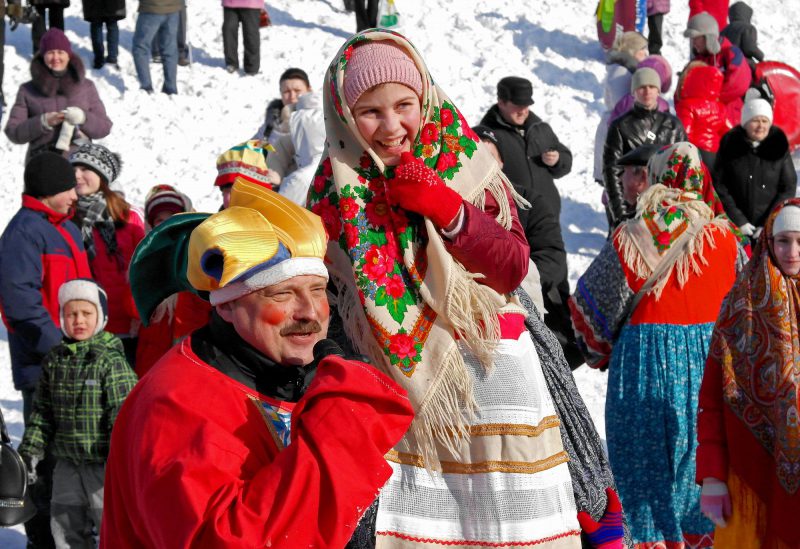
The main holiday dish is blini. They are made every day starting from Monday, but especially a lot from Thursday to Sunday. The tradition to make blini exists in Russia since the time of the worship of pagan gods. After all, it was the sun god Yarilo who was called upon to chase the winter away, and the round blini look very similar to the summer sun.
In addition to blini, other treats were served on Maslenitsa as well, for example olad’i (thick pancakes) and pies with various fillings: mushroom, cottage cheese, cabbage, etc.
In addition to various treats, this week is also rich in entertainment: mass sliding down the snow slopes on the sleds, dances, folk singing, and bonfires. The main tradition is the burning of Maslenitsa effigy that symbolizes the boring winter.
Every day of the Maslenitsa Week has its own name and meaning. Traditionally, the week was divided into the Narrow Maslenitsa which includes the first 3 days, and Broad Maslenitsa which took the remaining 4 days. In the first 3 days, along with the festive events, work on household chores was allowed. In the second part no one worked – everyone indulged in full festive pleasures.
Maslenitsa week
Monday – “Meeting”
On that day, ice slides were arranged. In the old days it was believed that the farther the sled goes, the louder the noise and laughter over the icy hill, the better the harvest will be and the longer the flax will grow.
They used to make an effigy from straw, put old women’s clothes on it, install it on a pole in a sleigh and go around the village signing songs like that. After that the effigy was placed on a snowy mountain, from which people used to slide down.
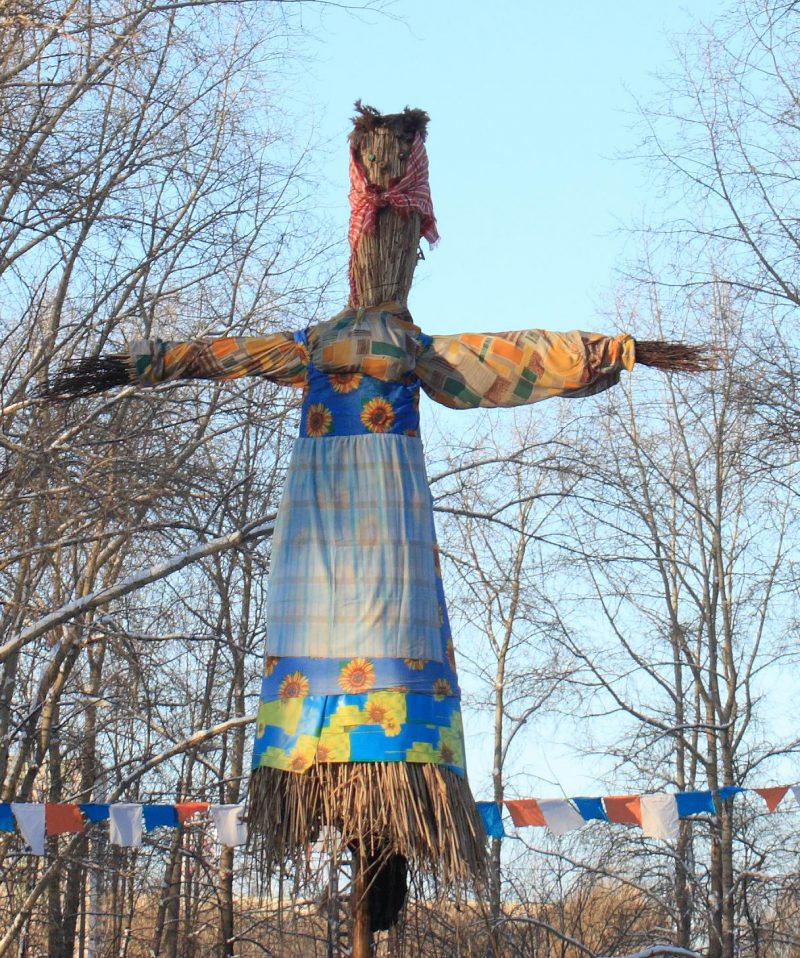
Blini start being made on that day as well. Relatives would visit each other to agree on how to spend the week.
Tuesday – “Zaigrysh” (~ Starting games)
From that day all sorts of entertainment began throughout the village: sleigh rides, outdoor games, performances of buffoons and puppet theaters.
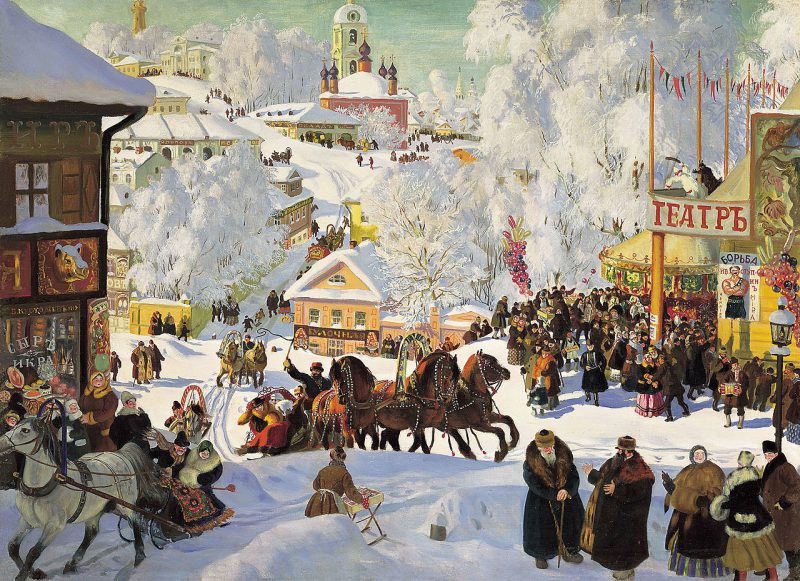
That day was especially exciting for unmarried girls due to the organized meetings of potential brides and grooms. In fact, many Maslenitsa customs were about matchmaking, in order to celebrate the wedding after the Lent.
Wednesday – “Lakomka” (Gourmand)
On that day, all the hostesses used to prepare various dishes in large volumes and serve a rich table, with blini as the main dish. Also on that day, the mother-in-law showed her good attitude to her son-in-law and invited him to a treat. People in the villages brewed beer together.
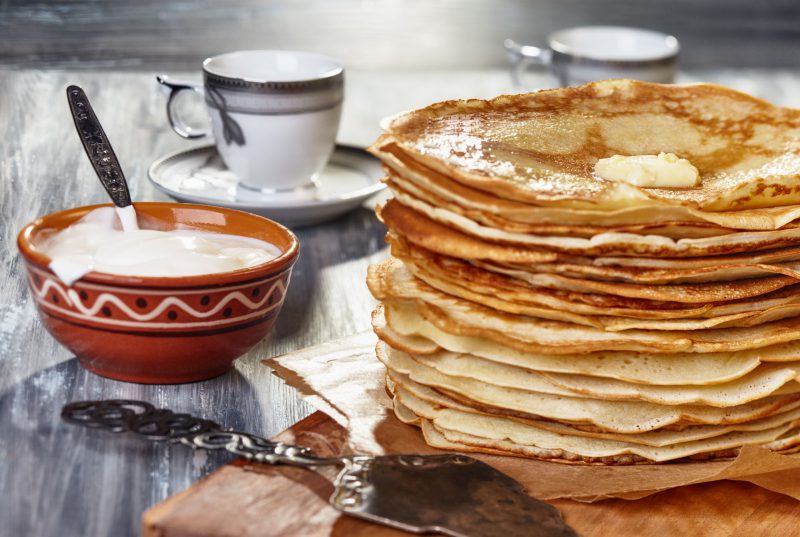
The stalls with hot drinks made of water, honey and spices appeared everywhere. They also sold hot nuts and honey cakes. There, right under the open sky, one could drink tea from a boiling samovar.
Thursday – “Razgulyai” (~ Revelry)
From that day on, Maslenitsa unfolded to its full extent – from morning till evening people were dancing, singing, and indulging in all sorts of fun: ice mountains, swings, fistfights, noisy feasts.
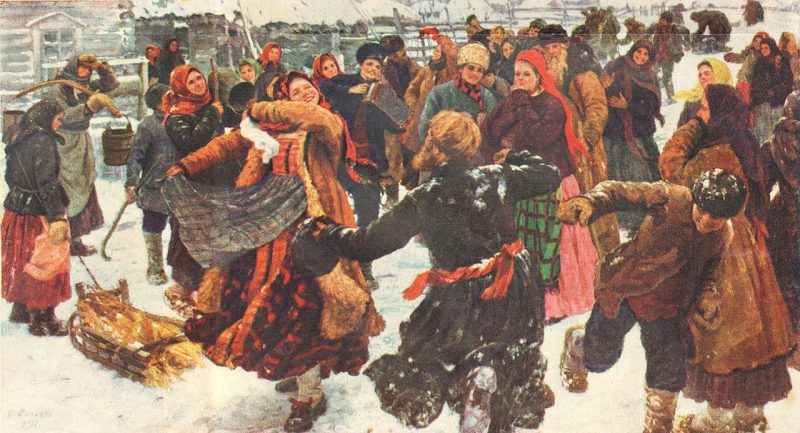
To help the sun get rid of the winter, people traditionally arranged horseback riding “on the sun” – that is, clockwise around the village. It was the most beloved and beautiful Maslenitsa custom. Everyone who had a horse, rich and poor, participated. The horses and sleighs were cleaned and decorated with the best people had. Horse hooves rattled, bells rang, and harmonics played.
A snow town with towers and gates was built on rivers, ponds and fields. Then people divided into two groups: one guarded the town, the other one had to take it by force.
The fist fights were held on that day as well. According to the rules it was prohibited to hide something heavy in a mitten, to beat below the belt and on the back of the head.
Friday – “Mother-in-law evenings”
A whole series of Maslenitsa customs on that day was aimed at speeding up weddings and helping young people find a suitable partner for themselves. Sons-in-law invited their mothers-in-law to visit them and offered them blini.
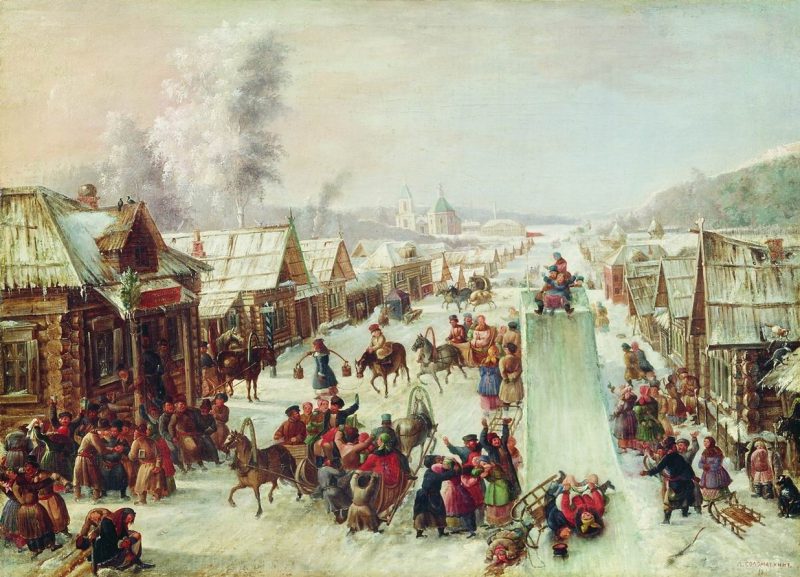
Saturday – “Daughter-in-law gathering”
On that day, the young daughter-in-law invited her relatives (girls) to her place. Maslenitsa was a pretext to gather and gossip.
Also on that day, all the newlyweds gathered from the surrounding villages to the place of celebration. Standing in a crowd of spectators, they were called out to the slope. There, they had to bow to the “world” – the villagers gathered around to see the event, to kiss each other and to slide down the slope. Under the slope, the young couple was supposed to kiss until the audience stops shouting “давай, давай!” (come on, come on).
The meaning of this ritual is in an effort to honor the newlyweds, as well as to express universal recognition and approval to the marital union.
“Forgiveness Sunday”
On that day, it was customary to ask for forgiveness from all those who you offended or did bad to, for your own misdeeds. And forgive others with a pure heart for the same actions that were accidentally or intentionally inflicted on you. This was a very bright and beautiful day before the beginning of Lent.
After that, one could go back to the songs and dances. On that day, the straw effigy personifying the passing winter was burned on a huge bonfire. Then the youth jumped over the fire contesting in agility. Thus the Maslenitsa used to come to its end.
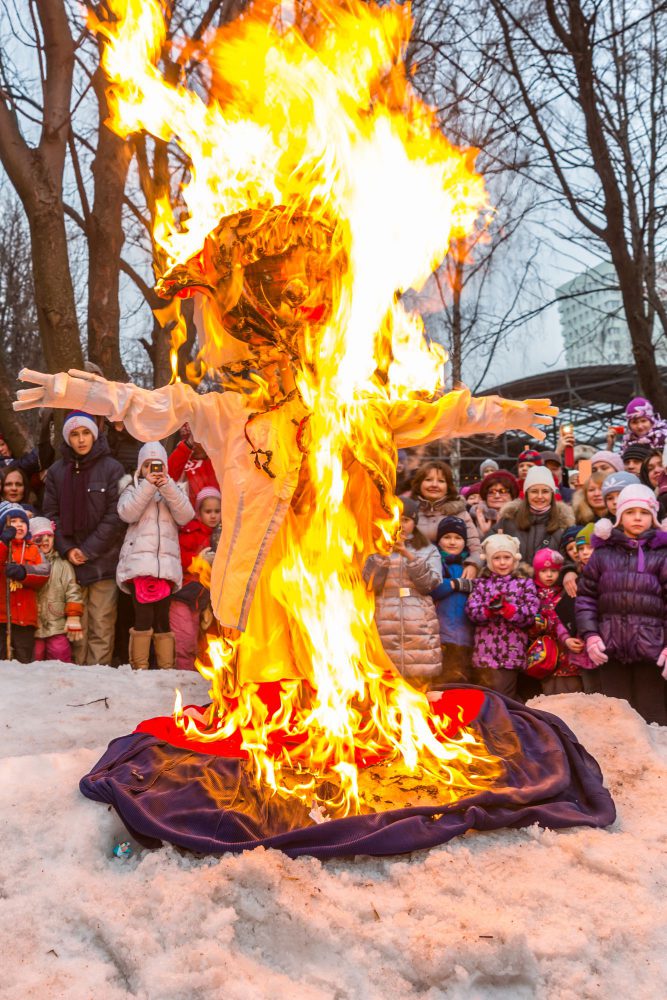
“Pure Monday”
The farewell to winter ended on the first day of Great Lent — Pure Monday, which was considered the day of cleansing from sin and foods not allowed during lent. On Pure Monday, it was obligatory to go to banya, the women washed the dishes cleaning them from the fat and the remainings of food that’s not allowed during the Lent.
Maslenitsa today
The traditions of the celebration of Maslenitsa are not forgotten today, although the celebration mostly takes place only on the last day of Maslenitsa – Sunday. People make pancakes and invite friends and relatives to visit them. In the cities, mass festivities are held with pancakes and other delicacies, comic battles and burning of the effigy.
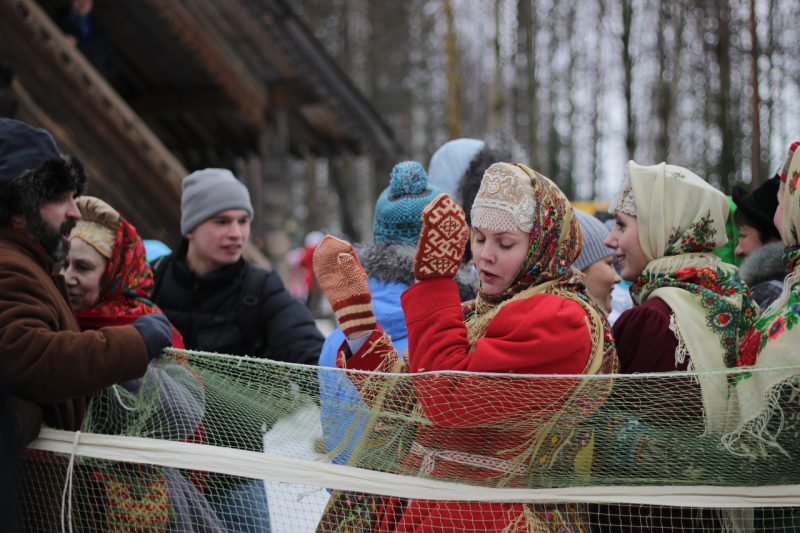
If you happen to be in Russia at that time, make sure not to miss this wonderful opportunity to immerse yourself into an old tradition and common fun!






